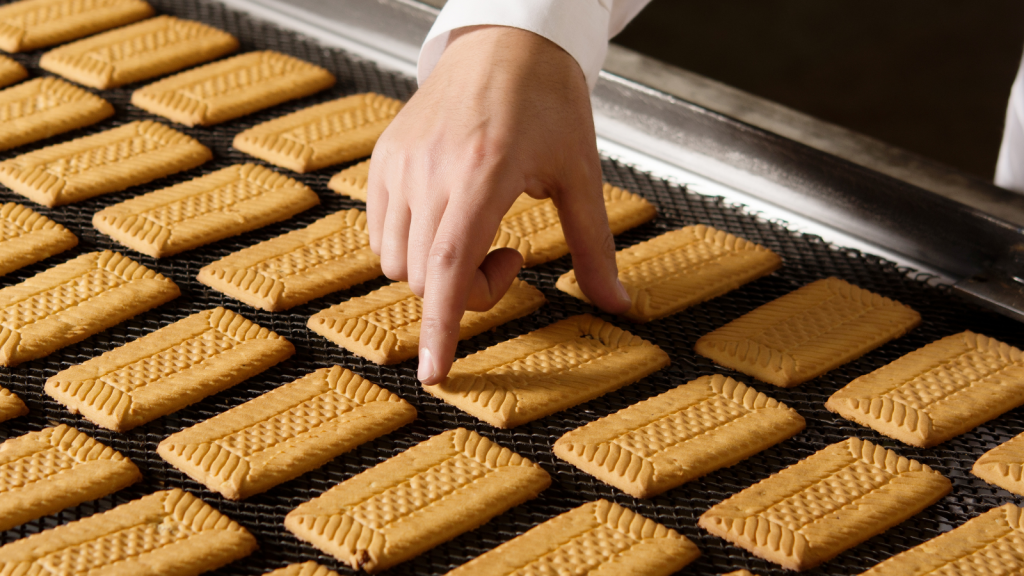The number one complaint that drives customers away from your business is terrible quality. Many of us do not understand that a problem in the manufacturing process might cause this to happen. In the cookie and cracker manufacturing industry, there is a lot of emphasis on baking methods to produce the best possible taste for the customer. Few manufacturers pay attention to the manufacturing process when selecting the final products’ ingredients, leading to many problems like granular or gritty cookies or over-baked crackers. Harmful effects could quickly lose the trust and business of your customers, which can be hard to revive if executed more than once.
While there was a time when all the key players in the cookie and cracker industry had a simple business model, it no longer works that way. The advent of the internet has made this market dynamic, with several players having gone out of business due to being unable to evolve with time. Despite its seeming simplicity, there are various challenges in this market – there are not too many, but they are complex.
Cookie and cracker manufacturing is a $4 billion industry in the United States alone. Unfortunately, many of these organizations have trouble keeping up with customer demands and producing happy customers.
Let us dive deep into the plausible causes for the same and the remedies.
Market Statistics of the Cookie and Cracker Manufacturing Industry
Cookies and crackers are a staple snack in many homes. Perhaps that’s why the cookie and cracker manufacturing industry has thrived in recent years. The industry’s revenue has been up nearly nine percent over the past five years. As more people turn to convenience foods, this trend may continue.
Here are a few more statistics about the cookie and cracker manufacturing industry:
The largest players in the industry are Nabisco, Kellogg Company, Flowers Foods, Campbell’s Soup Company, and Mondelez International.
The industry employs more than 27,000 people across the country.
In 2019 alone, the cookie and cracker manufacturing sector was worth $34 billion.
The highest percentage of employees (22%) work at companies with between 20 and 99 employees.
Challenges faced by the cookie and cracker manufacturing companies
The cookie and cracker manufacturing industry is seeing a resurgence of interest due to consumers’ renewed focus on taste. However, manufacturers face several challenges to keep up with the demands of their customers.
Manufacturing cookies and crackers require significant capital investment, which can be difficult for smaller businesses to afford. Additionally, the major players in these industries have been consolidating over time, adding to the challenge of competing against more giant conglomerates.
Another challenge for this industry is that consumer tastes change over time. What’s most prevalent today might not be popular tomorrow. The current trend is more health-conscious products free of artificial colors, flavors, or preservatives. Manufacturers must be able to adapt their product offerings to suit consumer preferences if they want to stay competitive.
Another significant challenge is that food safety regulations are constantly changing. One of the most recent changes in the cookie and cracker manufacturing industry is the shift toward using whole wheat flour instead of refined white flour.
THE CUSTOMER DISSATISFACTION STORY
Customers of the cookie and cracker manufacturing industry are unhappy, and there are many reasons for it.
· They make products that are not healthy or nutritious.
· Products have a high amount of sugar, salt, and trans-fat.
· Most importantly: their customers don’t like their products.
A recent survey showed that the cookie and cracker manufacturing industry customers are not happy. The survey showed that customers were concerned about the following things:
1. The cookies are not fresh.
2. The cookies are stale.
3. Crackers are too salty.
4. Cookies and crackers are manufactured in a foreign country, which is a concern for American consumers who want to buy products made in America.
The survey also revealed that most customers feel like they’re being taken advantage of by the manufacturers that produce cookies and crackers for them. They think these companies aren’t transparent enough about the products they’re buying, and some even feel like there’s a lack of communication between themselves and their suppliers. We heard from one respondent who said: “I would love to get more information about where my cookies come from.” I’m paying good money for them.”
Also, the structural incompatibilities that you will usually see in the cookie and cracker manufacturing industry are –
-The cookie and cracker industry is highly fragmented.
-The main growth opportunities are in exports, but weaker global economic conditions have held these back.
-The industry has experienced slower growth than the overall food market.
Potential Remedies for the Cookie and Cracker Industry
What’s the problem?
Customers of the cookie and cracker manufacturing industry are not happy. If they were, they would show it by purchasing more products from this industry than they already are.
What’s the solution?
Companies within the cookie and cracker manufacturing industry need to give customers a reason to want to purchase their product over another—and customer satisfaction is one of the biggest motivators. When customers are satisfied with a company’s product or service, they will be more likely to choose that product or service over another. Once a company establishes itself as a customer-satisfaction leader, it can expect to see more sales.
Customer satisfaction is essential for business growth because of an apparent correlation between customer satisfaction and customer loyalty. When customers have a positive experience with your company, whether through the quality of your products or services or your level of care in addressing their needs, they will be more inclined to get behind you as a brand and, also, when they need something again, they will turn back to your company instead of taking their business elsewhere. And if you’ve been doing your job well enough, they’ll also recommend you to others who might have similar needs.

Sangeetha brings 20 years of experience in Information Technology which includes Solution architecting, building micro services, research, and evaluation of business applications, integrating apps.
















